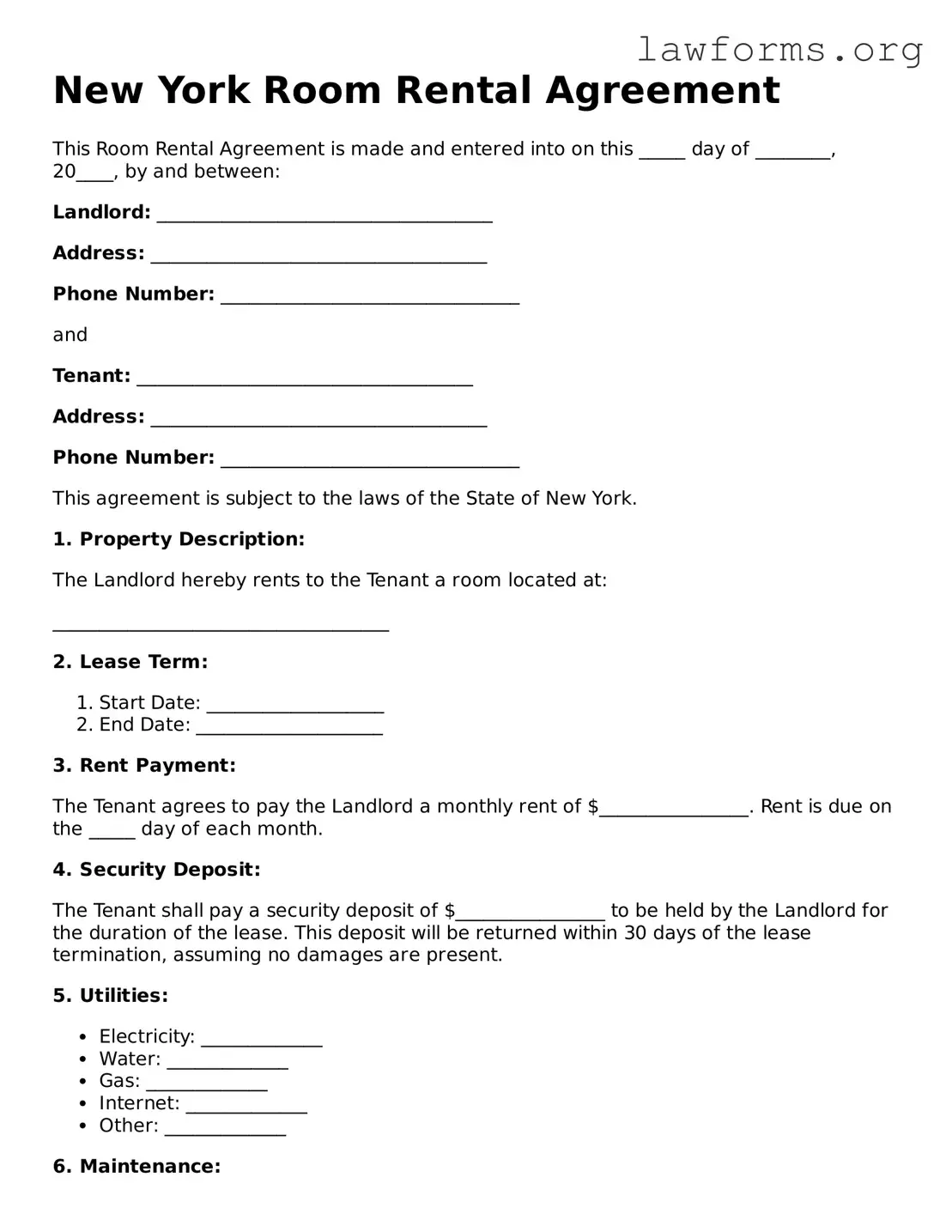New York Room Rental Agreement
This Room Rental Agreement is made and entered into on this _____ day of ________, 20____, by and between:
Landlord: ____________________________________
Address: ____________________________________
Phone Number: ________________________________
and
Tenant: ____________________________________
Address: ____________________________________
Phone Number: ________________________________
This agreement is subject to the laws of the State of New York.
1. Property Description:
The Landlord hereby rents to the Tenant a room located at:
____________________________________
2. Lease Term:
- Start Date: ___________________
- End Date: ____________________
3. Rent Payment:
The Tenant agrees to pay the Landlord a monthly rent of $________________. Rent is due on the _____ day of each month.
4. Security Deposit:
The Tenant shall pay a security deposit of $________________ to be held by the Landlord for the duration of the lease. This deposit will be returned within 30 days of the lease termination, assuming no damages are present.
5. Utilities:
- Electricity: _____________
- Water: _____________
- Gas: _____________
- Internet: _____________
- Other: _____________
6. Maintenance:
The Landlord agrees to maintain the rental unit in good repair and handle necessary maintenance and repairs unless caused by Tenant's misuse or negligence.
7. Termination:
This lease may be terminated by either party with a written notice of _____ days prior to the intended termination date.
8. Governing Law:
This agreement shall be governed by the laws of the State of New York.
By signing below, both parties agree to all terms and conditions set forth in this Room Rental Agreement.
Landlord Signature: ____________________________
Date: ________________________________
Tenant Signature: ____________________________
Date: ________________________________
